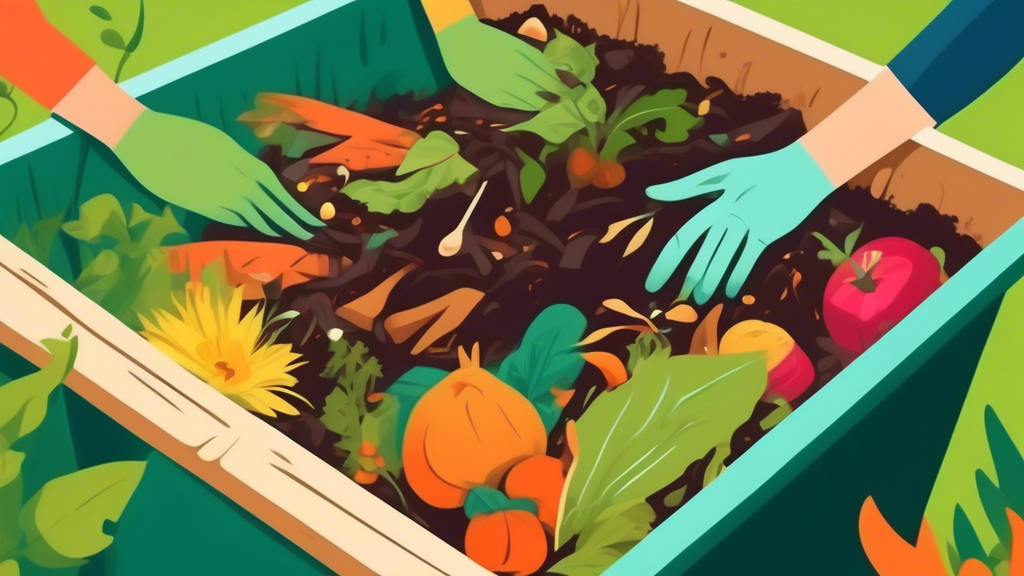Introduction
In a world grappling with environmental concerns, embracing
sustainable practices like composting is no longer a choice but a
responsibility. Composting, a natural process of recycling organic
matter, offers a multitude of benefits, from enriching soil fertility
to reducing landfill waste. This comprehensive guide delves into the
nitty-gritty of creating nutrient-rich compost at home, empowering
you to transform kitchen scraps and yard waste into gardening gold.
Understanding the Fundamentals of Composting
Composting might seem like a magical transformation, but it’s pure
science at play. It’s the aerobic decomposition of organic
materials by microorganisms, primarily bacteria and fungi, in the
presence of oxygen. These microscopic helpers break down complex
organic compounds into simpler substances, resulting in a dark,
crumbly, and earthy-smelling material called compost.
Essential Ingredients for Successful Composting
Think of your compost bin as a gourmet restaurant for
microorganisms. To keep them well-fed and happy, you need the
perfect blend of ingredients:
1. Browns: The Carbon Source
Brown materials provide carbon, the primary energy source for
compost microorganisms. Aim for a balance of:
- Dried leaves
- Shredded paper (avoid glossy or colored paper)
- Cardboard (torn into smaller pieces)
- Sawdust (untreated wood only)
- Straw or hay
2. Greens: The Nitrogen Source
Green materials provide nitrogen, essential for microbial growth and
reproduction. Include:
- Fruit and vegetable scraps
- Coffee grounds and filters
- Tea bags (remove staples)
- Grass clippings (in moderation)
- Plant trimmings
3. Water: The Elixir of Life
Moisture is crucial for microbial activity. Your compost pile should
be as damp as a wrung-out sponge.
4. Air: The Breath of Life
Aerobic composting thrives on oxygen. Regular turning or aeration
of your compost pile ensures a steady supply.
Choosing the Right Composting Method
Selecting the appropriate composting method depends on your space
constraints, time commitment, and aesthetic preferences:
1. Open Pile Composting
- Ideal for large volumes of yard waste.
-
Simply designate a corner in your yard and start layering your
materials. - Requires regular turning with a pitchfork or shovel for aeration.
2. Compost Tumbler
- Perfect for smaller spaces and easier turning.
- Elevated design promotes better aeration and drainage.
- Available in various sizes and materials.
3. Compost Bins
- Aesthetics meet functionality, suitable for urban settings.
- Provides a contained environment for composting.
- Can be constructed from various materials like wood or plastic.
4. Vermicomposting (Worm Composting)
- Employs earthworms to expedite the decomposition process.
- Ideal for indoor composting.
-
Requires a dedicated worm bin and careful management of moisture
levels.
Step-by-Step Guide to Building Your Compost Pile
Once you’ve chosen your composting method, it’s time to get your
hands dirty:
1. Location, Location, Location
-
Select a well-drained area with partial shade to prevent your
compost from drying out or becoming waterlogged.
2. Layering Like a Pro
-
Start with a layer of coarse brown materials (twigs, straw) at the
bottom for drainage. -
Alternate layers of green and brown materials, aiming for a
ratio of approximately 3:1 (browns:greens). - Chop or shred larger pieces to speed up decomposition.
3. Maintaining the Right Moisture Level
-
Water your compost regularly, ensuring it remains damp but not
soggy. -
Cover your compost pile with a tarp during rainy periods to
prevent excessive moisture.
4. The Art of Turning
-
Turn your compost pile every 1-2 weeks using a pitchfork or
shovel. -
Turning aerates the pile, distributes heat evenly, and speeds up
decomposition.
5. Monitoring the Temperature
- A hot compost pile (130-160°F) indicates active decomposition.
-
Use a compost thermometer to monitor the temperature and adjust
turning frequency accordingly.
Troubleshooting Common Composting Issues
Every compost pile has its quirks. Here’s how to troubleshoot
common problems:
Problem: Foul Odor
- Cause: Excess moisture or too many nitrogen-rich materials.
- Solution: Turn the pile and add more brown materials.
Problem: Pests
- Cause: Exposed food scraps or improper layering.
-
Solution: Bury food scraps deep within the pile and ensure proper
layering.
Problem: Slow Decomposition
- Cause: Lack of moisture, oxygen, or nitrogen.
-
Solution: Water the pile, turn more frequently, or add more
green materials.
Harvesting and Utilizing Your Compost
Depending on the composting method and environmental factors,
compost can take anywhere from 2 months to 2 years to mature. Your
compost is ready when it’s dark brown, crumbly, and has an
earthy aroma.
Using Your Compost:
- Mix it into your garden soil before planting.
- Use it as a top dressing for lawns and existing plants.
- Create a compost tea by steeping compost in water.
Benefits of Using Compost
- Enhances soil structure and drainage.
- Improves soil fertility and nutrient content.
- Reduces the need for chemical fertilizers.
- Promotes beneficial microbial activity in the soil.
- Reduces landfill waste and minimizes methane emissions.
Conclusion
Composting isn’t just a gardening technique; it’s a philosophy, a
commitment to closing the loop on our consumption patterns. By
embracing composting, we actively participate in nature’s
recycling system, transforming waste into a valuable resource that
nourishes our gardens, reduces our environmental footprint, and
fosters a deeper connection with the natural world. So, roll up
your sleeves, grab your gardening gloves, and embark on the
rewarding journey of composting.


